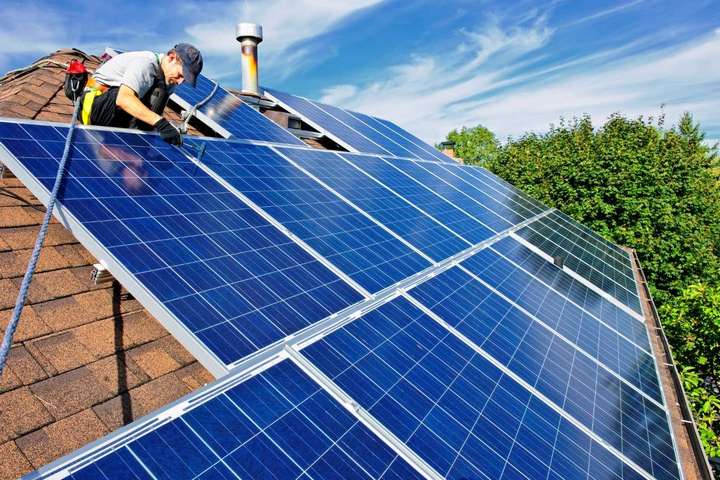Did you know that solar energy is expanding faster than any other energy market? That’s right: solar energy is more popular now than ever, and more people are considering a solar panel system.

But how do you get started? How do you go about determining how many solar panels you need to be able to power your home?
We’re here to help you out! Keep reading below to learn what you need to know to start your solar panel installation.
Calculate your Solar Panel Needs
Calculating your solar panel needs is essential in determining how many solar panels you need. The basic formula used to calculate this is watts = volts x amps.
It can help you determine the watts you need to meet your electricity needs. You can also use the wattage label on the back of your electronics to know the wattage required for each home appliance.
The next step is to calculate the solar panel’s energy output you are considering. It can be done by dividing the board’s wattage by the solar panel’s power output per hour.
Finally, divide the energy output by the energy required by your home appliances, which will show the number of panels needed.
By following this process and using these simple calculations, you can decide how many solar panels are needed for your home.
Use an Online Solar Panel Calculator
An online solar panel calculator is a great way to decide how many solar panels you need to power your home or business.
For example, if you need to power a single-family house, you will likely need an array of at least 20-40 panels. It is important to note that this figure will depend on the size of your roof. Other factors to consider are the climate you live in, and your home’s energy requirements.
The solar panel calculator can also help you understand what size of solar panel system you should install based on the type of roof you have and the amount of power you need.
Once you have all the factors, you can determine the amount of sunlight available to you year-round.
With the solar panel calculator, you can also estimate the installation costs, the return on investment, and the types of incentives available in your state.
Maximize Solar Panel Efficiency
Maximizing solar panel efficiency is an important goal for many individuals and businesses looking to use solar energy as a power source.
There are several ways to improve the efficiency of solar panels, including:
Position the Panels Correctly
Positioning solar panels is essential to maximizing solar panel efficiency. A good position for the solar panel should be at an angle that allows the board to take in direct solar radiation and cut light loss due to shadows.
Use Optimizers and Microinverters
Optimizers are small devices that are attached to each solar panel. It increases each solar panel’s efficiency by ensuring each one exports as much power as possible.
Microinverters are devices that are integrated into the solar panel and maximize the efficiency of a solar panel through higher voltage. Key advantages of these devices include greater efficiency, reliability, and more excellent installation options.
Together, optimizers and microinverters enhance the performance of solar panel systems by increasing the output, prolonging equipment life, and reducing the system’s high costs.
Use Proper Wiring
Maximizing solar panel efficiency starts with using proper wiring. Electrical wiring should be sized according to the system requirements to give adequate voltage and current to the solar panels.

All connections should be rated for outdoor use, and you must use weather-resistant materials such as insulation.
Use Junction Box Connections
Junction boxes direct electricity from the solar panels to the inverter, battery, and other areas.
Junction boxes should companies a good amount of contact between the solar panel and the cable, and both surfaces are free of dirt and dust.
Junction boxes should also be mounted in low-solar irradiance areas and away from shading sources. Implementing junction box connections in the right way can help ensure the greatest efficiency of the solar system.
Recommended Solar Panel Installations
Solar panel installations can be an excellent way to save money on energy costs in the long run. They give a long-term solution for reducing energy bills and benefiting the environment.
Installing solar panels is straightforward, and professional installers can help. You can check this link to find the best solar panels for your home.
Depending on the homeowner’s needs, the solar power system can be placed on the roof, in a backyard, or on the side of a building.
Solar panel installations typically last 25-30 years, resulting in long-term savings over the years. Additionally, solar panels are relatively low-maintenance, making them a practical choice for homeowners who don’t have the time or resources to pay for frequent energy repairs.
As with any energy-saving choice, it’s essential to shop around and do your research to ensure you receive the best deal possible. Installing solar panels is an excellent way to save money in the long run and is also helping to improve the environment.
Know How Many Solar Panels You Need
To know how many solar panels, you must assess your current energy needs, calculate your daily and annual energy usage, calculate the amount of sun your location gets, and check your budget.
Considering these factors will help you determine the number and size of solar panels that best suit you.
Don’t hesitate to contact a local professional for help and advice – they can aid you in every step of your journey to energy independence.
Did you find this article helpful? Check out the rest of our blogs!

